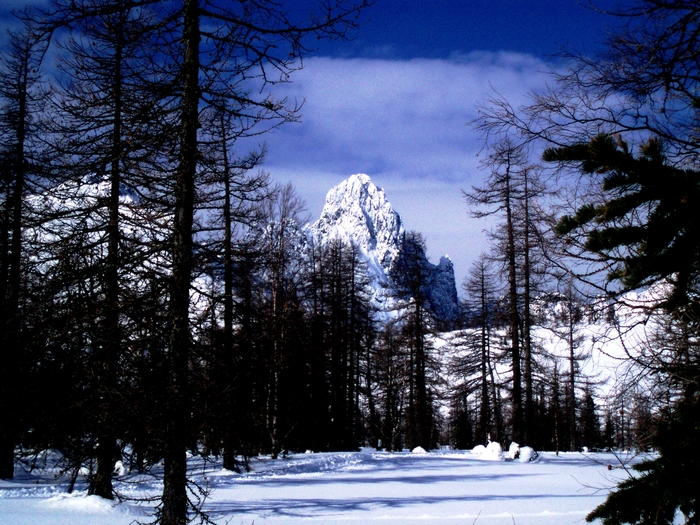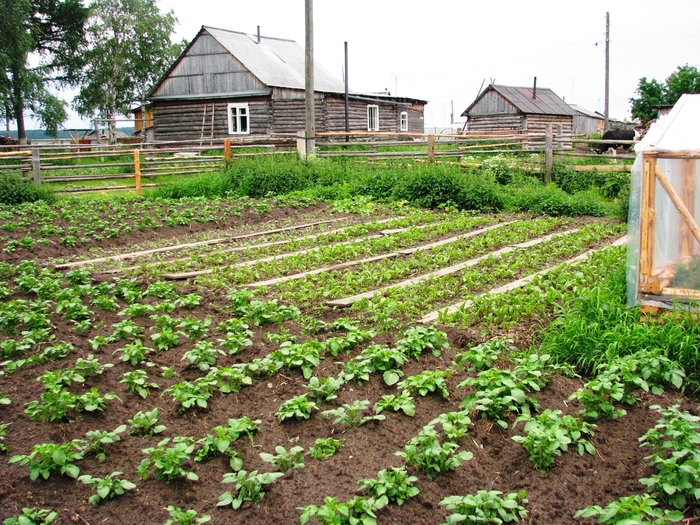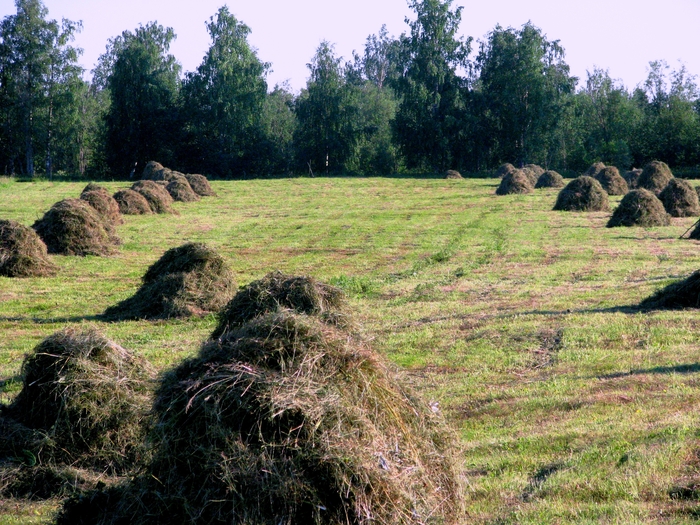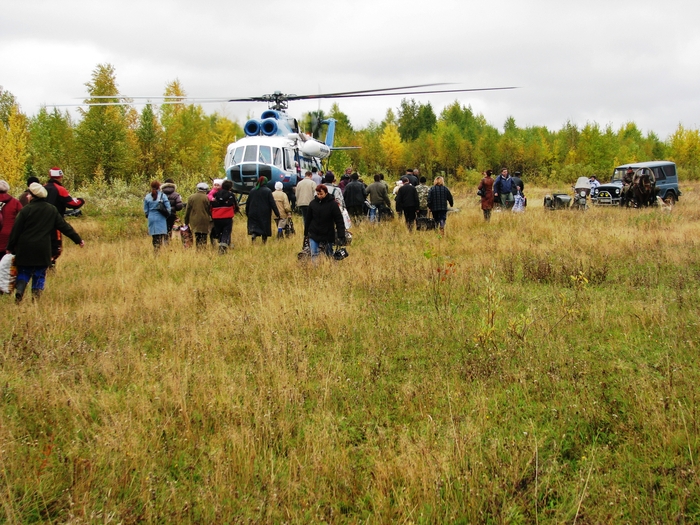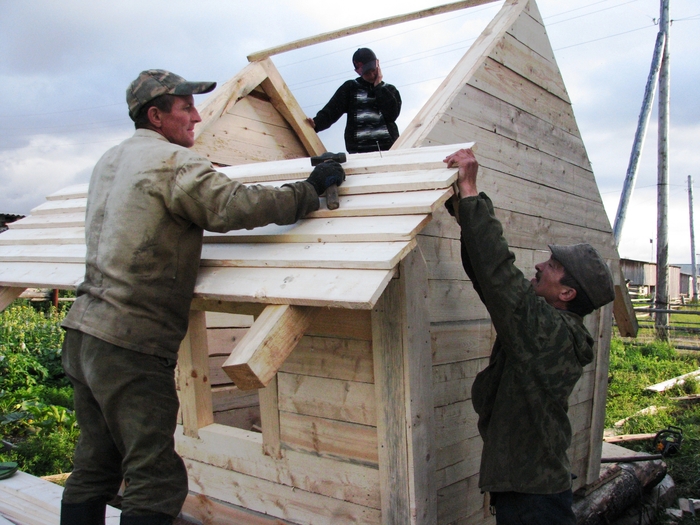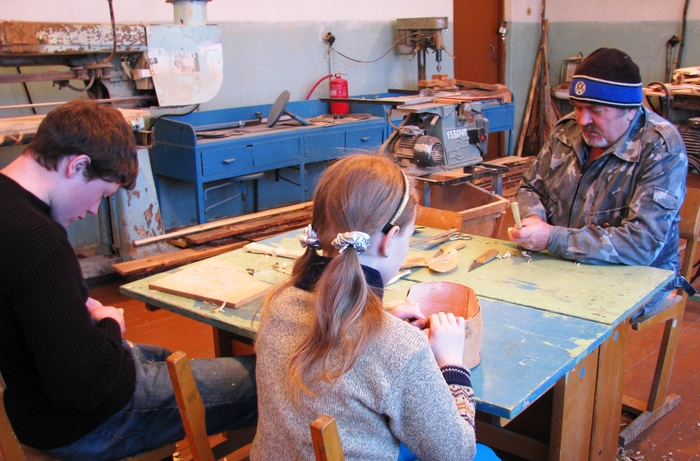«Forest Village» project
Priuralskoye village is the centre of the rural area which includes Aranets and Danilovka villages. It is located on the left bank of the Pechora River at the distance of 80 km upstream from town Pechora. Earlier it was named Respublika, but in 1962 the village was renamed into Priuralskoye just because of its close location to the Urals. On a clear day one can easily observe the Sablinskiy Range and its stupendous peak from the river bank.
History
Stepan Yefimovich Gabov is considered to be the founder of the village. In 1925 he arrived here together with his family from Vishera banks and was the first person to build a house. At that time the settlement, rich in game, fish, and flood meadows with thick grass, was called Yarankunya (Komi for “Nenets Gulf”): migrating Nenets reindeer breeders often stopped not far from nearby lichen forests (“yaran” is Komi for “Nenets”).
Later, a fellow-countryman of Gabov came here with his wife and settled down in the area. In 1932, two more families, the Ulyashovs and the Karmanovs, both former peasants from Vychegda, left their agricultural community on the opposite bank of the Vychegda to live in Yarankunya. Next year, other members of the community – three Kuznetsov brothers and three Vetoshkin brothers – settled on the left bank of the Pechora.
According to the villagers, the second name of the settlement was given to it by a land-surveyor. He was Russian, and the Komi name seemed strange for him. He gathered the people and suggested renaming Yarankurya into Respublika, which was more suitable for that time.
In the course of time more people came to Respublika, including people from Pechora uprivers. The locals worked hard, and soon the village flourished. Practicing animal husbandry, the collective farm increased livestock number, bred horses and sheep, and even had its own reindeers. Field-husbandry also thrived: people cultivated cereal crops, potatoes, and turnips. They were busy with hunting, fishing, and storing food that nature gave them. In 1939 the population of Respublika (at that time it was part of the Ust-Voyskiy district) was 176 people. In 1940 they opened a primary school, which was extremely important for the future life of the village, as it already had 23 children of school age.
This peaceful way of life was suddenly interrupted by the war. Almost every man went to the front, and, as everywhere in the country, only the elders, women, and children remained in the village. They had to work twice more – for themselves and for those who were at the front. Very few men came back. Though nowadays there are more than 600 people living in Priuralskoye, there is only one man who survived the war and returned home in 1945.
After the war, the village life began with renewed energy. Local husbandry grew stronger and became very popular in Komi. Due to rich meadows, by the 1980s the local state farm had more than 1000 heads of livestock. The rest of the fodder was usually sent to the neighbouring farms.
The village is adapting to new conditions
Dramatic changes here, like in any other are in the country, were connected with the 1990s. Today, the village has no production at all, except for two peasant farm enterprises in Priuralskoye and Aranets. However, the local population is not used to idling around, so they are diligently working and adapting to new conditions.
“Priuralskoye was mostly populated in the 1930s,” says Yevdokiya Pystina, the deputy of the settlement. “When dispossession of kulak families started on Vychegda, many people moved here. Among those were the Podorovs, the Vetoshkins, the Panyukovs, the Dyemins, the Nekhoroshevs, the Karmanovs, the Zyuzevs, and many other families, whose last name was not typical for Pechora land. They were strong and industrious people, and today’s residents of Priuralskoye have inherited their spirit.
According to the social research held by the Institute of Social and Energy Problems of the North within the framework of “Forest Village” project, among the 9 studied settlements, “Priuralskoye and Turjya showed the best sales of farm products”.
Alexander Maksimov, Ph.D. in Economics, says, “At muddy seasons Priuralskoye is literally cut off from the district centre. Thus, more than a half of people’s income comes from selling potatoes – the only product one can keep till winter when the roads are frozen. Many of dairy products undergo primary processing and are sold as cream, sour cream, curd, and butter. Primary milk processing is less costly if a household has two cows instead of one, so, many people in Priuralskoye have more than one cow, which is not typical today for other villages in Komi.” According to Maksimov, “the income increase connected with personal household goes hand in hand with livestock growth and basic income of families in Priuralskoye.” Basic income is the income of a family member who works in a state-financed organization or at rotational team employment. Thus, “all money that family earns at public sector and at rotational team is actively used to support the households and their agricultural potential”, believes the scientist.
What does it mean? It means that even unemployed and without the possibility to get out of the village whenever they like the locals are not going to give in or leave their native land. They don’t want to live by go-begging; instead, they prefer to work hard and be satisfied with life. Besides, the conditions are quite favorable for agriculture development.
The main problem is bad roads
Today there is no road from Pechora to Priuralskoye that would function all the year round. At muddy seasons, there is a helicopter which flies in once a week, but the rest of the time people have to deal with absence of transportation. Usually they use a motorboat to travel up and down the river, but that communication stops with the first frosts; in winter they reach the nearest village across the river by snowmobile and then go by bus. Even those who have cars do not always manage to travel, because sometimes “winter” roads get frozen only in January. At the same time, if year-round transportation were possible, the households would be able to provide nearby towns with fresh, ecologically clean produce on a regular basis.
“The main problem is that we have no roads at all,” say people from Priuralskoye. ”The only thing we need from the authorities is a good road. We’ll manage everything else.”
Indeed, year-round communication with the town would stimulate the households, and more young people would stay in the village. The younger generation likes their native village and language, and almost everyone speaks Komi there. On the other hand, not every young graduate would agree to stay in Priuralskoye for the whole year without a possibility to get out.
Initiative of the locals
“We’ll manage everything else” is not just words. Hundreds of minor problems appear every day, but people in Priuralskoye got used to solving them.
For instance, after liquidation of the state community farm there was no proper agricultural equipment left in the village. All the remaining pieces were not suitable for farm work. Nevertheless, the local men repaired the tractors and the sawmill, and everything worked well until a bankruptcy creditor came and decided to auction the renewed equipment. Fortunately, the deputies did not allow to take away the equipment which was vitally important for the villagers. People took part in the auction and bought everything in. They agreed on partial payment out of wage debts left from the state farm.
Timber is the main building material in Priuralskoye, so all the houses are wooden and battened, fondly painted in lovely colours. Priuralskoye is also very green – each street has trees and vegetable gardens. Water is usually taken from a simple well, but many villagers have their own drive wells that come handy in animal husbandry and gardening. Almost everyone has one or two greenhouses for cucumbers, tomatoes, peppers, and other vegetables.
Speaking about the initiative of the locals, one more case should be mentioned. In the 1990s a new rural housing complex (microdistrict) was built on the other bank of the river Belaya, so the settlement was divided into two parts. That was especially inconvenient in spring – high water in the river cut people off from their working places. Help came from the local men. Led by Vasiliy Artemovich Bazhukov, they found old pipes, cut timber, and built a bridge. The bridge still functions, as well as many other things made by the local masters at the initiative of Vasiliy Bazhukov: children’s playground, party-coloured fence around the kindergarten, or forest arbours behind the village, which are a popular place for recreation.
Bird of happiness from Priuralskoye
A chipwood bird made by Yevgeniy Rayevsky, craftsman from Priuralskoye, is very popular in gift shops in Syktyvkar and even Moscow. The locals say that earlier this “bird of happiness” was a symbol of a sun-cult: it seems that the bird is encircled and its feathers remind of sun rays. Chipwood birds are not the only creation of Yevgeniy Vladimirovich; he is jack-of-all-trades, and gladly shares his craft techniques with anyone who is interested.
In Priuralskoye they praise hard work and good rest. There are always many people at local festivals, and everyone has fun. The villagers do not only celebrate New Years Day and Farewell to Winter, but have a special festival for a reborn Hunter’s Day, and Week of Komi Language and Literature. The latter is organized in Priuralskaya secondary school every year, and many students and teachers, as well as the villagers, take part in it. Besides, there are performances in Komi language put up by the students which always have great success.
Mountaineering is another passion in the village. The local school team regularly participates in republic competitions. Despite the strong opponents from Vorkuta and Syktyvkar tourist clubs, young tourists from Priuralskoye often win. The team has climbed many peaks, and they like to say “A man who has been to the mountains will never forget it”.
Cooperation between the National Park and the locals will be profitable for everyone
There is a good tourist track going through Priuralskoye towards the Yugyd Va National Park. The track has been informally used by many active tourists for years, mainly because of its convenience. Therefore, in the long run, Priuralskoye could become the “gates” to the National Park, which is currently the most interesting and frequently attended part of the Sub-Polar Urals.
Cooperation between the National Park and the villagers would be promising for both parties. It can be based on receiving and debarkation of tourists, together with a complex eco-regional route for Yugyd Va visitors and ethno-cultural and historical potential of Priuralskoye and Aranets. It would be profitable for Pechorsky subdivision of the Park, the Pechora district, and for the rural settlement, because the majority of tourist groups reach the Park (even its Pechora side) through the town Inta, where transportation to the Park borders and guiding on route functions for a long time. Undoubtedly, people of Priuralskoye and Aranets would also get a benefit. Tourism could become a new prospective activity and a good additional source of income for the locals. Furthermore, increasing number of tourists going through Priuralskoye (if the route begins to function) would help to build a year-round road to the village. This all sounds like a good opportunity to use.
This option for additional economic development of Priuralskoye (with husbandry still being the main industry) was suggested to the villagers within the framework of the “Forest Village” project. They have already made the first steps towards success. They finished the so-called SWOT-analysis of the village potential and identified the strengths, weaknesses, opportunities, and threats for development of this business activity. They also worked out two prospective summer and winter routes to the Sub-Urals through Priuralskoye. Interviews in Pechora and Syktyvkar suggested the preliminary requirements of these routes. Now the initiative depends only on the villagers of Priuralskoye and the National Park.

